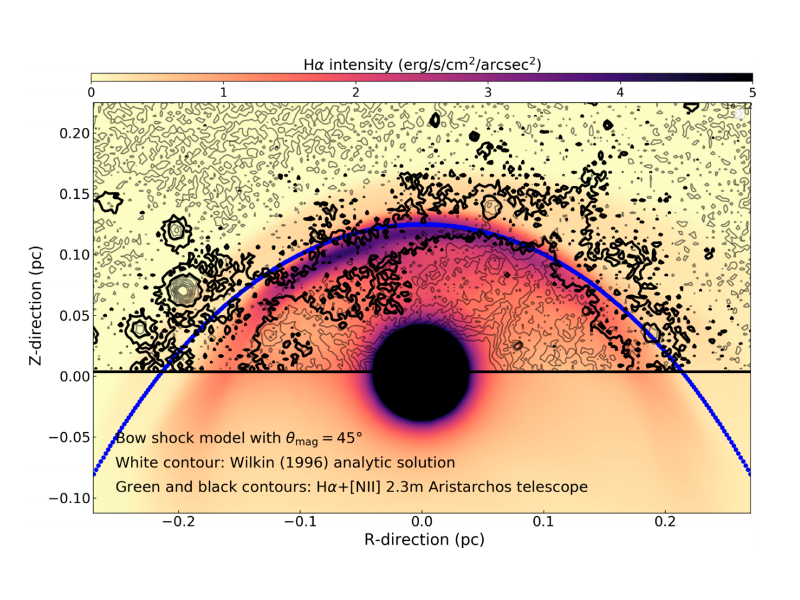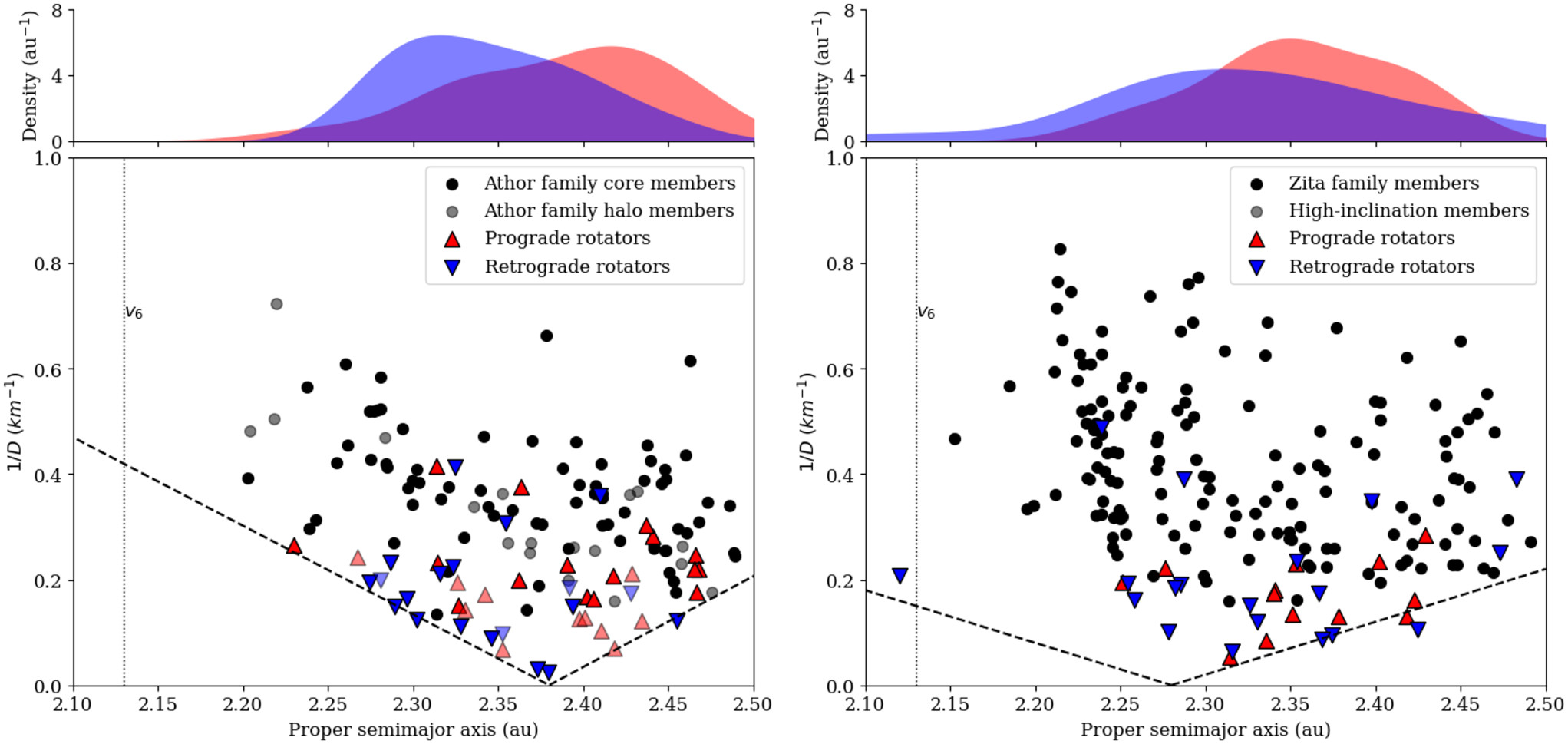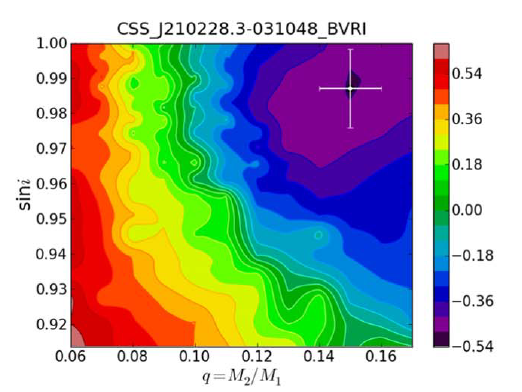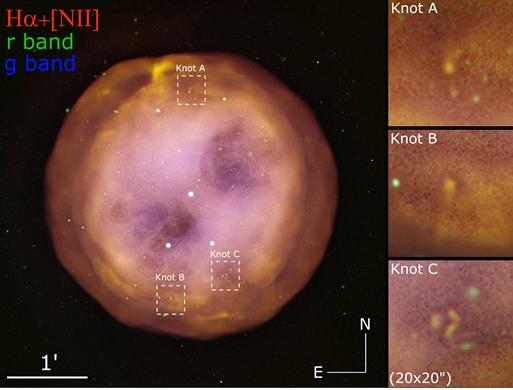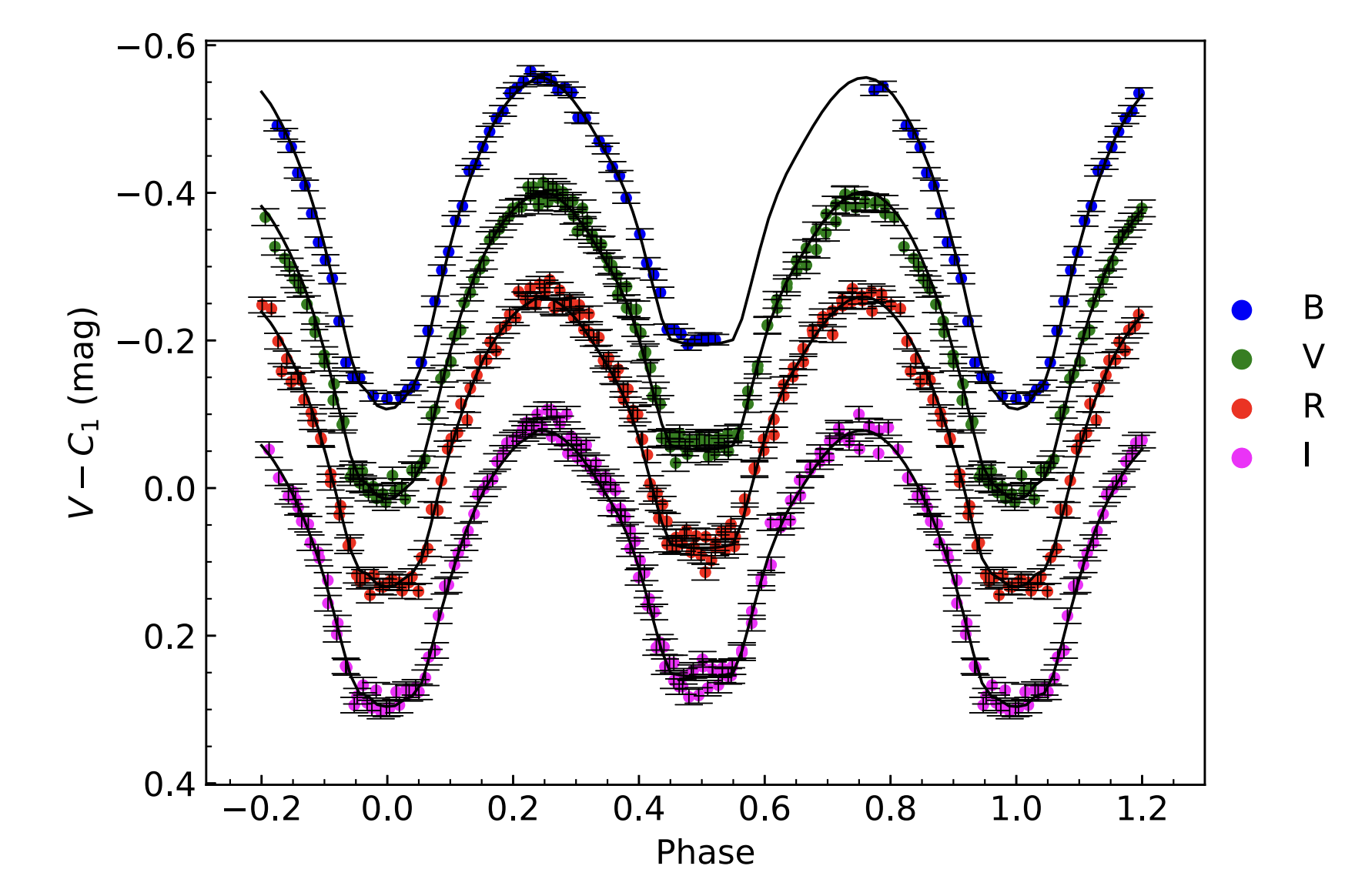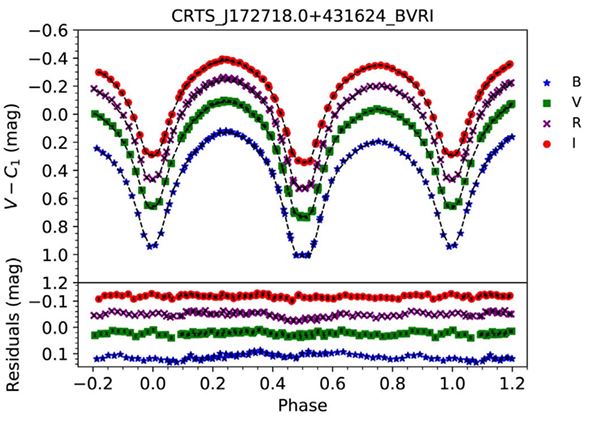3D MHD astrospheres: applications to IRC-10414 and Betelgeuse
D. M.-A. Meyer (1), A. Mignone (2), M. Petrov (3), K. Scherer (4,5), P. F. Velazquez (6), P. Boumis (7) ((1) Universitaat Potsdam, Institut fuer Physik und Astronomie, Karl-Liebknecht-Strasse 24/25, 14476 Potsdam, Germany (2) Dipartimento di Fisica Generale Facolta di Scienze M.F.N., Universita degli Studi di Torino, Via Pietro Giuria 1, I-10125 Torino, Italy (3) Max Planck Computing and Data Facility (MPCDF), Giessenbachstrasse 2, Garching, Germany (4) Institut fuer Theoretische Physik, Lehrstuhl IV: Plasma-Astroteilchenphysik, Ruhr-Universitat Bochum, Bochum, Germany (5) Research Department, Plasmas with Complex Interactions, Ruhr-Universitat Bochum, Bochum, Germany (6) Instituto de Ciencias Nucleares, Universidad Nacional Autonoma de Mexico, CP 04510. Mexico City, Mexico (7) Institute for Astronomy, Astrophysics, Space Applications and Remote Sensing, National Observatory of Athens, Penteli, Greece)
arXiv:2107.05513 [astro-ph.SR] Published: July 12 2021
Comparison between our bow shock model Run-θmag-45 and observational data of the circumstellar medium of IRC-10414. The image plots the surface Hα brightness calculated from our model with θmag = 45° (in erg cm2 s−1 arcsec−2 ) and the Hα+[NII] data taken by the 2.3 meter Aristarchos telescope, as black contours. Thin contours are the background data and thick contours trace the bow shock nebula. The blue contour represents the analytic solution of Wilkin (1996). (Figure 14)
Abstract
A significative fraction of all massive stars in the Milky Way move supersonically through their local interstellar medium (ISM), producing bow shock nebulae by wind-ISM interaction. The stability of these observed astrospheres around cool massive stars challenges precedent two-dimensional (magneto-)hydrodynamical simulations of their surroundings. We present three-dimensional magneto-hydrodynamical (3D MHD) simulations of the circumstellar medium of runaway M-type red supergiant stars moving with velocity v* = 50 km s−1 . We treat the stellar wind with a Parker spiral and assume a 7 µG magnetisation of the ISM. Our free parameter is the angle θmag between ISM flow and magnetisation, taken to 0° , 45° and 90° . It is found that simulation dimension, coordinate systems and grid effects can greatly affect the development of the modelled astrospheres. Nevertheless, as soon as the ISM flow and magnetisation directions differs by more than a few degrees (θmag > 5° ), the bow shock is stabilised, most clumpiness and ragged structures vanishing. The complex shape of the bow shocks induce important projection effects, e.g. at optical Hα line, producing complex of astrospheric morphologies. We speculate that those effects are also at work around earlier-type massive stars, which would explain their diversity of their observed arc-like nebula around runaway OB stars. Our 3D MHD models are fitting well observations of the astrospheres of several runaway red supergiant stars. The results interpret the smoothed astrosphere of IRC10414 and Betelgeuse (αOri) are stabilised by an organised, non-parallel ambient magnetic field. Our findings suggest that IRC-10414 is currently in a steady state of its evolution, and that Betelgeuse’s bar is of interstellar origin.

